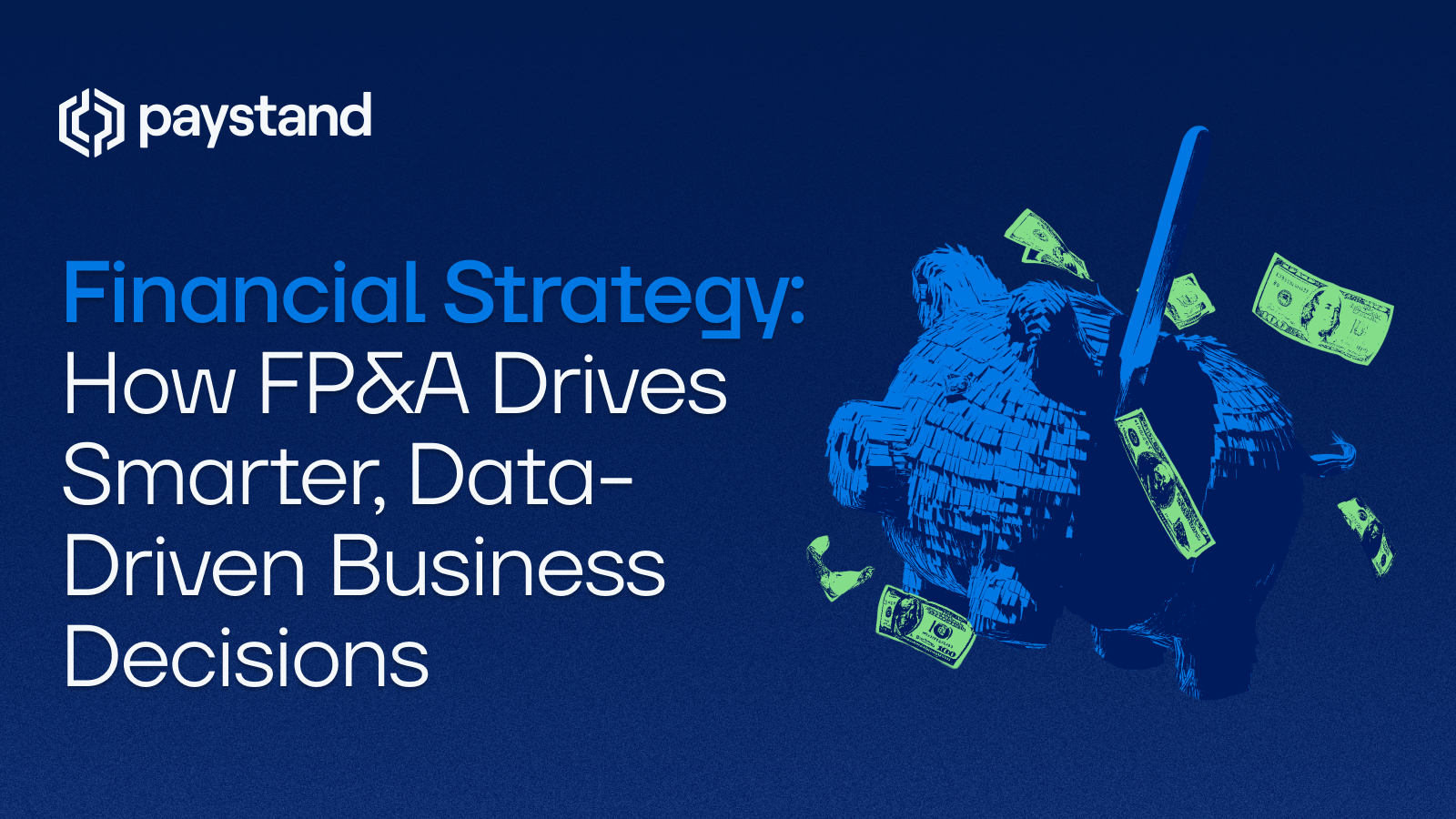Financial Strategy: How FP&A Drives Smarter, Data-Driven Business Decisions

Table of Contents
- What is Financial Planning and Analysis (FP&A)?
- Core Functions of FP&A
- How FP&A Helps Businesses
- Key Tools and Software for FP&A
- How FP&A Connects Company Goals with Measurable KPIs
Key Takeaways
- FP&A is central to financial strategy, bridging strategy with measurable financial outcomes.
- Core functions include budgeting, forecasting, variance analysis, performance monitoring, and scenario planning.
- Strong FP&A enables better business decisions, clearer financial impact visibility, and risk reduction.
- Technology—AI, dashboards, and financial modeling software—enhances efficiency and insight.
- Connecting company goals to KPIs ensures that every decision aligns with the broader strategic planning objectives.
A strong financial strategy is more than budgeting or tracking expenses, it is the framework that connects a company’s vision to actionable, measurable outcomes. At the heart of this strategy lies financial planning and analysis (FP&A), which empowers businesses to analyze data, create financial forecasts, and guide decisions that impact overall business performance.
Modern FP&A teams are essential for organizations seeking to balance growth, profitability, and risk. By leveraging structured analysis and financial modeling, finance leaders gain the insight needed to make data-driven decisions and understand the financial impact of strategic initiatives.
What is Financial Planning and Analysis (FP&A)?
Financial planning and analysis (FP&A) is the discipline responsible for budgeting, forecasting, and analyzing a company’s financial performance. FP&A is critical for translating company goals into actionable metrics, ensuring that strategic objectives are grounded in financial reality.
FP&A is not limited to accountants or finance teams; it intersects with leadership, operations, and strategy. Teams use financial statements, historical data, and market trends to create insights that guide strategic planning, offering clarity on future performance.
For example, integrating AI tools for finance can streamline data collection and improve the accuracy of financial forecasts, making FP&A more predictive and less reactive. Learn more here.
Core Functions of FP&A
FP&A teams perform several core functions to support business success:
-
Budgeting and Forecasting
FP&A teams develop detailed budgets and financial forecasts, helping businesses allocate resources efficiently and plan for growth. This process involves financial modeling to predict outcomes under different scenarios.
-
Variance Analysis
Comparing actual performance to budgets or forecasts is critical for identifying gaps and areas for improvement. Variance analysis allows FP&A managers to pinpoint unexpected trends and recommend adjustments.
-
Performance Monitoring
FP&A teams track business performance through KPIs and metrics derived from financial statements and other financial data. Regular reporting enables leaders to respond quickly to changing conditions.
-
Scenario Planning
Complex financial scenarios, such as expansions or market downturns, require modeling multiple outcomes. Scenario planning allows companies to anticipate risks and measure the potential financial impact of strategic choices.
By performing these functions, FP&A ensures that finance teams are not only recording historical results but actively shaping future outcomes.
How FP&A Helps Businesses
FP&A bridges the gap between finance and strategy. It provides visibility into financial data and enables organizations to make data-driven decisions. Here are some ways FP&A drives value:
- Improved Business Decisions: By analyzing trends and modeling outcomes, FP&A equips leadership with actionable insights to guide business decisions.
- Financial Impact Visibility: Organizations gain a clearer understanding of how initiatives affect cash flow, profitability, and ROI.
- Risk Reduction: FP&A teams identify potential risks before they materialize, allowing for proactive mitigation.
For guidance on structuring your finance function to maximize FP&A effectiveness, see Finance Team Structure Best Practices and Finance Org Chart.
FP&A ensures that financial planning is not isolated in spreadsheets but is fully integrated with operational and strategic goals.
Key Tools and Software for FP&A
Modern FP&A relies on technology to handle complex financial data efficiently:
- Automated Dashboards: These tools consolidate financial information from multiple sources, enabling real-time tracking of business performance.
- Financial Modeling Software: Helps FP&A teams perform scenario analysis and assess the financial impact of business decisions.
- AI and Analytics Tools: Assist in analyzing large datasets to detect trends, optimize forecasts, and improve accuracy.
Leveraging digital tools can enhance the efficiency of variance analysis, reporting, and strategic planning, allowing FP&A managers to focus on advising leadership rather than manual number-crunching. For example, dashboards like Paystand’s Dashboard and Reporting provide live insights that directly influence financial decision-making.
Read more about how technology supports smarter decisions in Financial Decision-Making.
How FP&A Connects Company Goals with Measurable KPIs
A fundamental role of FP&A is to align corporate strategy with measurable KPIs. By linking goals to financial and operational metrics, FP&A ensures that all initiatives are evaluated on their contribution to business performance.
For example:
- Revenue growth goals can be tied to monthly or quarterly financial forecasts.
- Cost management initiatives can be tracked via variance analysis.
- Investment decisions can be modeled to show potential financial impact before committing resources.
This alignment gives leaders clarity and confidence, enabling FP&A managers to provide actionable recommendations and ensuring accountability across the organization.
By creating a feedback loop between strategy and results, FP&A transforms financial planning and analysis into a strategic driver of success, not just a reporting function.
Empower your finance team to turn data into action and align strategy with measurable outcomes. Discover how Paystand’s real-time dashboards and reporting tools can give your FP&A team the insights they need. Explore Dashboard and Reporting tools.







%20(1)%20(1).jpg?width=100&height=100&name=IMG_3752%20(1)%20(1)%20(1).jpg)